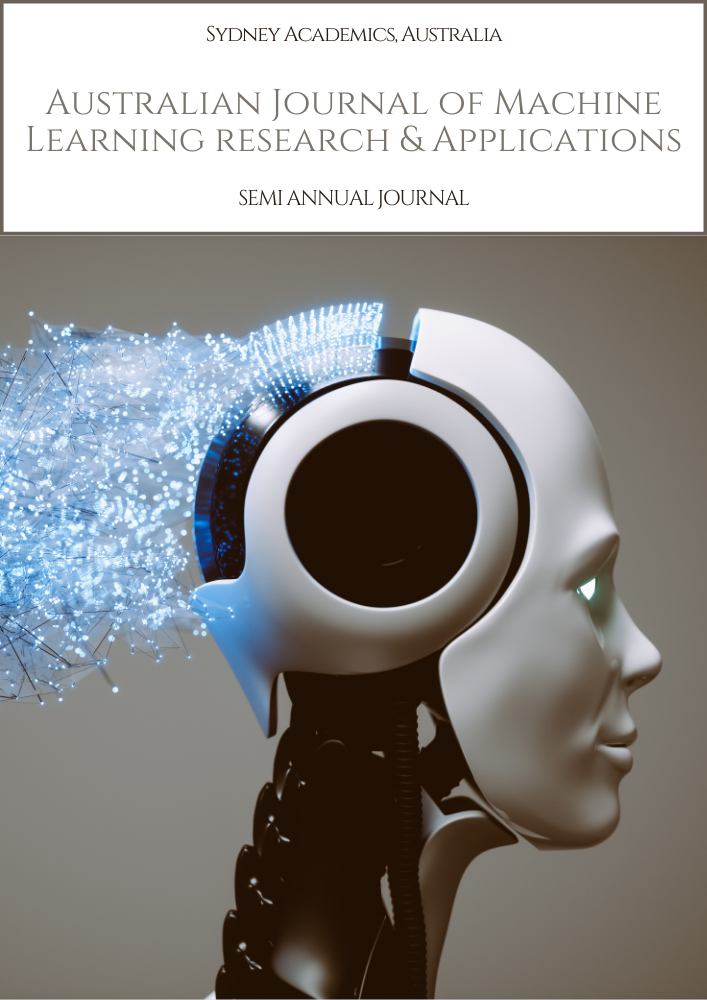Collaborative Data Engineering: Utilizing ML to facilitate better collaboration among data engineers, analysts, and scientists
Keywords:
Collaborative Data Engineering, Machine LearningAbstract
Collaborative data engineering is at the heart of modern data-driven organizations, bridging the gaps between data engineers, analysts, and data scientists to drive actionable insights. This synergy, however, often encounters challenges like fragmented workflows, misaligned priorities, and communication barriers across teams. Machine Learning (ML) offers a transformative approach to fostering collaboration by automating repetitive tasks, improving data quality, and enabling innovative tools that adapt to diverse needs. Through ML-powered data catalogues, teams can quickly discover and understand datasets, reducing time spent on manual exploration. Intelligent version control systems allow engineers and scientists to work concurrently on models and data pipelines, minimizing conflicts and improving transparency. Additionally, ML can identify anomalies in data pipelines and suggest optimizations, enabling teams to focus on innovation rather than firefighting issues. By integrating ML-driven collaboration tools into the data engineering lifecycle, organizations empower their teams to work seamlessly, whether building robust ETL pipelines, analyzing trends, or deploying predictive models. This approach accelerates the workflow and fosters a culture of trust and shared understanding among stakeholders. Leveraging machine learning for collaborative data engineering aligns technical efforts with business goals. This ensures that all teams contribute effectively to creating scalable, high-quality data solutions that fuel organizational success.
Downloads
References
Birnholtz, J. P., & Bietz, M. J. (2003, November). Data at work: supporting sharing in science and engineering. In Proceedings of the 2003 ACM International Conference on Supporting Group Work (pp. 339-348).
Wang, D., Weisz, J. D., Muller, M., Ram, P., Geyer, W., Dugan, C., ... & Gray, A. (2019). Human-AI collaboration in data science: Exploring data scientists' perceptions of automated AI. Proceedings of the ACM on human-computer interaction, 3(CSCW), 1-24.
Nahar, N., Zhou, S., Lewis, G., & Kästner, C. (2022, May). Collaboration challenges in building ml-enabled systems: Communication, documentation, engineering, and process. In Proceedings of the 44th international conference on software engineering (pp. 413-425).
Martinez, I., Viles, E., & Olaizola, I. G. (2021). Data science methodologies: Current challenges and future approaches. Big Data Research, 24, 100183.
Van der Aalst, W. M. (2014). Data scientist: The engineer of the future. In Enterprise interoperability VI: Interoperability for agility, resilience and plasticity of collaborations (pp. 13-26). Springer International Publishing.
Kim, M., Zimmermann, T., DeLine, R., & Begel, A. (2017). Data scientists in software teams: State of the art and challenges. IEEE Transactions on Software Engineering, 44(11), 1024-1038.
Chiarello, F., Belingheri, P., & Fantoni, G. (2021). Data science for engineering design: State of the art and future directions. Computers in Industry, 129, 103447.
Passi, S., & Jackson, S. J. (2018). Trust in data science: Collaboration, translation, and accountability in corporate data science projects. Proceedings of the ACM on human-computer interaction, 2(CSCW), 1-28.
Vogelsang, A., & Borg, M. (2019, September). Requirements engineering for machine learning: Perspectives from data scientists. In 2019 IEEE 27th International Requirements Engineering Conference Workshops (REW) (pp. 245-251). IEEE.
Deekshith, A. (2022). Cross-Disciplinary Approaches: The Role of Data Science in Developing AI-Driven Solutions for Business Intelligence. International Machine learning journal and Computer Engineering, 5(5).
Haney, E. (2016). Data Engineering in Aerospace Systems Design & Forecasting.
Kreuzberger, D., Kühl, N., & Hirschl, S. (2023). Machine learning operations (mlops): Overview, definition, and architecture. IEEE access, 11, 31866-31879.
Chen, N. C., Drouhard, M., Kocielnik, R., Suh, J., & Aragon, C. R. (2018). Using machine learning to support qualitative coding in social science: Shifting the focus to ambiguity. ACM Transactions on Interactive Intelligent Systems (TiiS), 8(2), 1-20.
Tatineni, S., & Boppana, V. R. (2021). AI-Powered DevOps and MLOps Frameworks: Enhancing Collaboration, Automation, and Scalability in Machine Learning Pipelines. Journal of Artificial Intelligence Research and Applications, 1(2), 58-88.
Eigenbrode, S. D., O'rourke, M., Wulfhorst, J. D., Althoff, D. M., Goldberg, C. S., Merrill, K., ... & Bosque-Pérez, N. A. (2007). Employing philosophical dialogue in collaborative science. BioScience, 57(1), 55-64.
Thumburu, S. K. R. (2022). A Framework for Seamless EDI Migrations to the Cloud: Best Practices and Challenges. Innovative Engineering Sciences Journal, 2(1).
Gade, K. R. (2023). Data Governance in the Cloud: Challenges and Opportunities. MZ Computing Journal, 4(1).
Gade, K. R. (2023). Data Lineage: Tracing Data's Journey from Source to Insight. MZ Computing Journal, 4(2).
Thumburu, S. K. R. (2022). Real-Time Data Transformation in EDI Architectures. Innovative Engineering Sciences Journal, 2(1).
Thumburu, S. K. R. (2021). Data Analysis Best Practices for EDI Migration Success. MZ Computing Journal, 2(1).
Katari, A., & Vangala, R. Data Privacy and Compliance in Cloud Data Management for Fintech.
Katari, A., Muthsyala, A., & Allam, H. HYBRID CLOUD ARCHITECTURES FOR FINANCIAL DATA LAKES: DESIGN PATTERNS AND USE CASES.
Thumburu, S. K. R. (2020). Enhancing Data Compliance in EDI Transactions. Innovative Computer Sciences Journal, 6(1).
Thumburu, S. K. R. (2021). A Framework for EDI Data Governance in Supply Chain Organizations. Innovative Computer Sciences Journal, 7(1).
Gade, K. R. (2020). Data Analytics: Data Privacy, Data Ethics, Data Monetization. MZ Computing Journal, 1(1).


